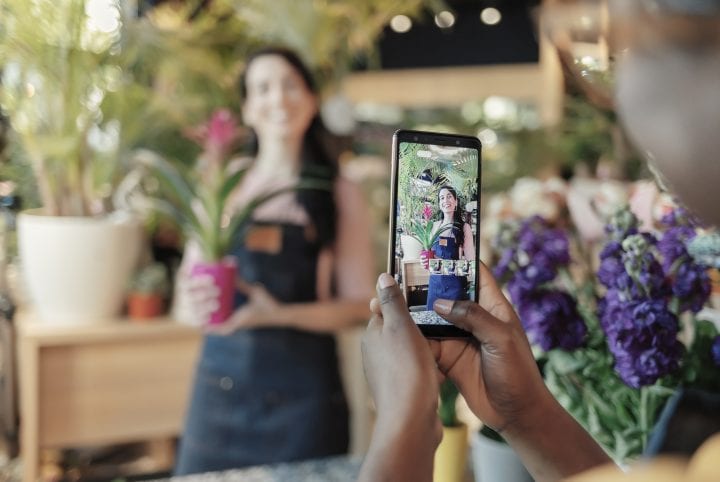
Snap lockdowns, closed stores, increased online shopping and supply chain disruptions were all part of 2021’s ‘new normal’ for consumers and retailers.
As their tills rang in the New Year, retailers around the world hoped that COVID-19 was a thing of the past. Yet 2021 brought more lockdowns and increased challenges for both retailers and consumers.
Throughout 2020, retailers (particularly those deemed non-essential) scrambled to adapt on the run to the increasingly challenging environment. How did that picture change this year? Did consumers react differently in this new COVID-19 reality? And how did retailers continue to meet their customers’ needs?
Monash Business School’s Australian Consumer and Retail Studies (ACRS) conducted research throughout September 2021 with consumers and retailers to understand how retail has adapted during the COVID pandemic.
eCommerce boom
With people spending more time at home, eCommerce boomed during the pandemic.
In its annual eCommerce report, Australia Post reported that in 2020 online sales accounted for 16.3 per cent of total retail spend and Online Goods spending was up 57 per cent since 2019.
ACRS research shows just how popular and commonplace eCommerce has become with the majority of Australians (84 per cent) purchasing online in the last three months and over a third (37 per cent) of these shoppers making weekly online purchases.
Indeed, half (50 per cent) of online shoppers reported that they have made more online purchases since the beginning of the pandemic, compared to prior, while only four per cent have made less.
Both the United Kingdom (UK) and United States (US) also experienced high levels of online sales with 94 per cent and 84 per cent, respectively, having made an online purchase in the last three months and over half (54 per cent and 53 per cent, respectively) of these shoppers making weekly online purchases.

What shoppers purchased
Clothing, footwear and accessories and grocery products were the most purchased goods online (56 per cent and 41 per cent, respectively), followed by household (e.g. homeware, hardware) and personal care goods (e.g. cosmetics, baby care) (33 per cent and 32 per cent, respectively).
With the exception of grocery products, female shoppers purchased more clothing, footwear and accessories, household, and personal care goods compared to males.
Males purchased more consumer electronics, media and entertainment, sporting goods and equipment, and automotive goods compared to females.
Across the globe, both UK and US shoppers purchased greater amounts of goods across all retail categories compared to Australia, except for sporting goods and equipment.
Physical retailers also popular online
Physical retailer websites were the most frequently used online channel to purchase retail goods from, with almost two-thirds (64 per cent) of Australian online shoppers making a purchase from this channel in the past three months.
Online marketplaces and online-only retailer websites were also frequently used (50 per cent and 44 per cent, respectively), while retailer mobile/tablet apps and social media were the least frequently used channels to make online purchases (19 per cent and 11 per cent, respectively).
However, consumers used online channels for a range of reasons aside from purchasing. Physical retailer websites were most frequently used for product information such as colour, size, measurements, and features.
Online marketplaces and online-only retailers were most frequently used to compare the prices of goods. Retailer mobile/table apps were used mostly for seeking out promotions and special offers.
While social media was primarily used as inspiration for future purchases.
Overall, shoppers were highly satisfied with their online experiences with each of the online channels rated above four out of five.
Free over fast shipping preferred
Standard delivery (3+ days) was by far the most frequently used method to deliver the goods that Australian shoppers purchased online, with almost two-thirds (65 per cent) selecting this method most often.
Standard delivery was also the most common delivery option for UK and US shoppers, but compared to Australia, this method was selected less frequently with just over half of shoppers selecting this option (51 per cent and 52 per cent, respectively).
Instead, a higher proportion of UK and US shoppers selected same-day delivery (19 per cent and 18 per cent, respectively) and express (1-2 days) delivery (22 per cent and 18 per cent, respectively) more frequently than Australian shoppers (11 per cent and 12 per cent, respectively).

While Australian shoppers were willing to wait longer periods to receive their online goods, shipping-related promotions were amongst the most important promotions when deciding to make an online purchase.
Free shipping was identified as the most important promotion, with 81 per cent of shoppers indicating that it is very important to their online purchase decisions. Indeed, aside from price discounts – which was identified as the second most important promotion for online purchase decisions.
The next two most important promotions were free returns and conditional free shipping (67 per cent and 57 per cent rated these promotions very important, respectively).
Based on their experiences throughout the pandemic, many Australians (68 per cent) also indicated that seeking out sales and special deals is important to them now and in the future, which was also echoed by UK and US shoppers (both 66 per cent).
Shopping for products that are locally produced is also important to Australian shoppers (65 per cent), significantly more so than to UK and US shoppers (58 per cent and 48 per cent, respectively).
Divided over physical versus online
Prior to COVID-19 being declared a pandemic, over two-thirds (68 per cent) of Australian shoppers used physical stores as their main channel for non-grocery retail purchases, while just under one-third (32 per cent) used online methods (27 per cent selected home delivery and 5 per cent selected click and collect).
During the pandemic, when the nation faced lockdowns and pandemic-related restrictions, online became the main non-grocery retail channel.
Almost two-thirds (64 per cent) of Australian shoppers used online methods as their main channel for non-grocery retail purchases (56 per cent selecting home delivery and 8 per cent selecting click and collect).

This change was also seen across the globe and was particularly prominent in the UK, where 79 per cent of British shoppers used online methods as their main channel for non-grocery retail purchases (72 per cent selecting home delivery and 7 per cent selecting click and collect).
The pandemic has accelerated the adoption of eCommerce in Australia, but is this change fleeting or is it here to stay?
As Australia’s double-dose vaccination rate reaches 80 per cent and restrictions continue to ease across the country in time for Christmas, 50 per cent of shoppers expect to use physical stores as their main channel for non-grocery retail purchases in the future (down from 68 per cent prior to COVID-19).
The other 50 per cent expect to use online as their main channel (up from 32 per cent prior to COVID-19).
Not only is this the way that consumers expect to shop in the future, but if given the choice, these are the preferred main channels for Australian shoppers (50 per cent prefer physical stores and 50 per cent prefer online).
Physical stores and the ability to see, touch and trial goods was ranked the most influential source on purchase decisions, followed by retailer websites and internet searchers, which were ranked as the second and third most important sources, respectively.
With consumers using online channels more than ever before, it has become increasingly important that retailers strive to provide shoppers with seamless omnichannel experiences to meet increasing online expectations.
Investing in the digital shopfront, whether through retailer websites or social media, will be instrumental to attract customers and compete for screen time. And as retailers focus on improving digital integration in the retail experience, adding humanised touches will help retailers continue to connect with their customers in a deeper way.
While the pandemic caused challenges, it also created an environment for innovation and changes, many of which are here to stay.


